The Bud Billiken Parade and Picnic, also known as The Bud Billiken Day Parade, is an annual event in Chicago, Illinois, celebrating African-American life, education, and youth.
It is the most prominent African-American parade in the United States and the second-largest parade overall.
The parade occurs on the city’s south side on the second Saturday in August, followed by a picnic and festival in Washington Park.
The event was created by Robert S. Abbott, the founder and publisher of the Chicago Defender, and David Kellum, co-founder of the Bud Billiken Club.
The Origins of Bud Billiken
In 1923, Abbott created the fictional character Bud Billiken while considering adding a youth section to the Chicago Defender newspaper.
The character gained prominence in a comic strip and the newspaper, eventually inspiring the parade in 1929.
The character represented pride, happiness, and hope for black residents during the Great Depression.
In the early 1930s, the “Bud Billiken” section of the newspaper listed and archived the names of international youth in the Carter G. Woodson Regional Library of the Chicago Public Library.
Evolution of the Parade
The Bud Billiken Parade has grown from a locally sponsored event to one with a significant corporate presence, attracting celebrities, politicians, and musicians.
In addition, it signals the impending end of summer and the beginning of the new school year.
The parade route has changed over the years, with the current route on Dr. Martin Luther King Drive passing through the Bronzeville and Washington Park neighborhoods.
Parade sponsors also raise money for college scholarships for local youth.
Celebrity and Dignitary Involvement: Star-Studded Support
The Bud Billiken Parade has always enjoyed significant involvement from notable celebrities and dignitaries, contributing to its growing popularity and reach over the years.
These high-profile attendees have brought increased attention and support to the parade and the African-American community in Chicago.
The parade attracted notable entertainment, sports, and political figures from its early years.
U.S. President Harry S. Truman, Michael Jordan, Barack Obama, Joe Louis, Muhammad Ali, Duke Ellington, Adelaide Hall, Oprah Winfrey, Aretha Franklin, Diana Ross, Lena Horne, James Brown, Ethel Waters, Cab Calloway, Paul Robeson, Chaka Khan, and Billie Holiday are just a few of the many well-known personalities who have attended the parade.
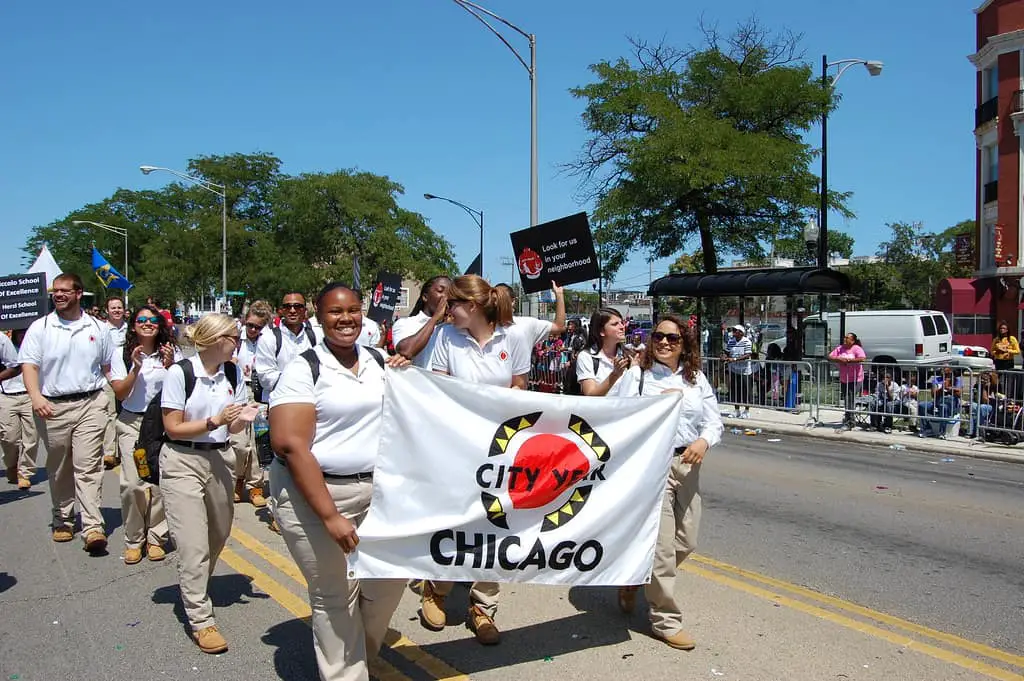
In 1956, President Truman rode alongside John H. Sengstacke, the nephew of Abbott and the person who took over the Chicago Defender in 1948, and Mayor Richard J. Daley.
The parade has also featured popular musical acts as concert performers at the post-parade picnic.
In 2006, around 26 million people saw the parade, including 25 million television viewers and 1.2 million attendees.
The 2006 parade had 74,000 participants and 160 floats and vehicles.
The involvement of celebrities and dignitaries has not only boosted the parade’s profile but also served as a testament to the importance of the event in celebrating and uplifting the African-American community.
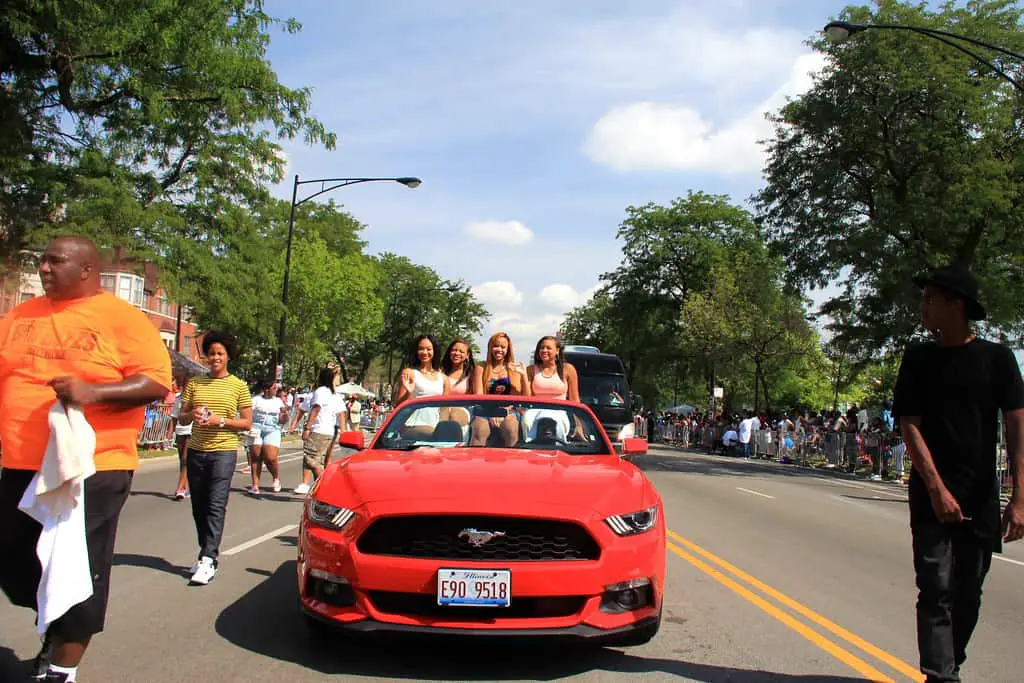
Parade Contests and Grand Marshals
The parade includes categorized contests for participants, such as best float and best marching band.
In addition, each year, a notable person or persons are invited to serve as Grand Marshal, often featuring politicians, musicians, or entertainers.
Past Grand Marshals include Chance the Rapper, Chaka Khan, and rapper T.I.
Parade Themes: A Reflection of the Times
The Bud Billiken Parade has a long-standing tradition of adopting a unique theme each year, chosen by the parade committee.
These themes convey a specific message or focus that reflects the African-American community’s current social or cultural climate.
The tradition of selecting a theme began in 1940 when parade organizers chose “Americanism” to demonstrate patriotism within the African-American community in the United States.
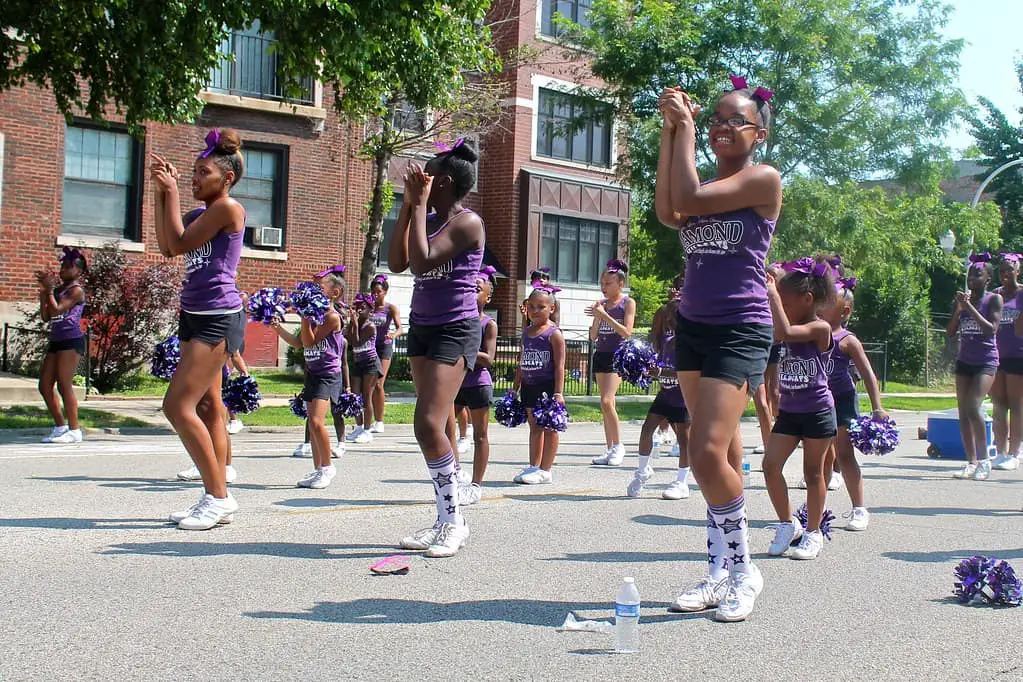
Over the years, the themes have evolved to encompass various topics and issues relevant to the community.
Some notable themes from recent years include:
- 2017: “Honoring our Hometown Heroes” – This theme paid tribute to local heroes within the community who had made significant contributions or sacrifices for the betterment of others.
- 2018: “Back to School, Back to Work, Back to Life, Back to Bud” – This theme encouraged the community to embrace new beginnings, whether that be in their education, careers, or personal lives, while also celebrating the return of the Bud Billiken Parade.
- 2019: “90 Years of Excellence, Legacy on Parade” – Celebrating the parade’s 90th anniversary, this theme focused on the event’s long-standing history and the legacy it has created within the African-American community in Chicago and beyond.
- 2021: “Back to School, Back to Life, and Back to Bud Billiken” – Following the scaled-down event in 2020 due to the COVID-19 pandemic, this theme echoed the sentiments of the 2018 theme, emphasizing the importance of education and the return to normalcy while celebrating the parade’s comeback.
- 2022: “Power of Bud Billiken 365” – This theme highlighted the ongoing influence and impact of the Bud Billiken Parade throughout the entire year, showcasing how the parade’s values of unity, education, and celebration resonate within the community every day.
The themes of the Bud Billiken Parade not only provide a focus for the event and serve as an opportunity to engage with and address critical issues, interests, and sentiments of the African-American community.
By reflecting on the times and adapting to the changing social and cultural landscapes, the parade continues to be a relevant and vital celebration for generations of Chicagoans.

Television Broadcasts: A Closer Look
The Bud Billiken Parade has enjoyed a long history of television broadcasts, bringing the event to millions of viewers nationwide.
The parade began airing on television in 1978 on WGN-TV, which continued to broadcast until 2012.
After WGN-TV stopped covering the parade, WCIU-TV took over in 2012 but canceled its coverage in 2014.
WLS-TV, which has been broadcasting the parade since 1984, remains the primary television broadcaster of the event.
In addition to local TV coverage, national networks have also showcased the parade, with BET and Centric premiering the event on their channels in 2012.
The television broadcasts of the parade have allowed it to reach a larger audience and helped increase its impact beyond the Chicago area.
It has become a key event for the African-American community and a source of pride and unity for many.
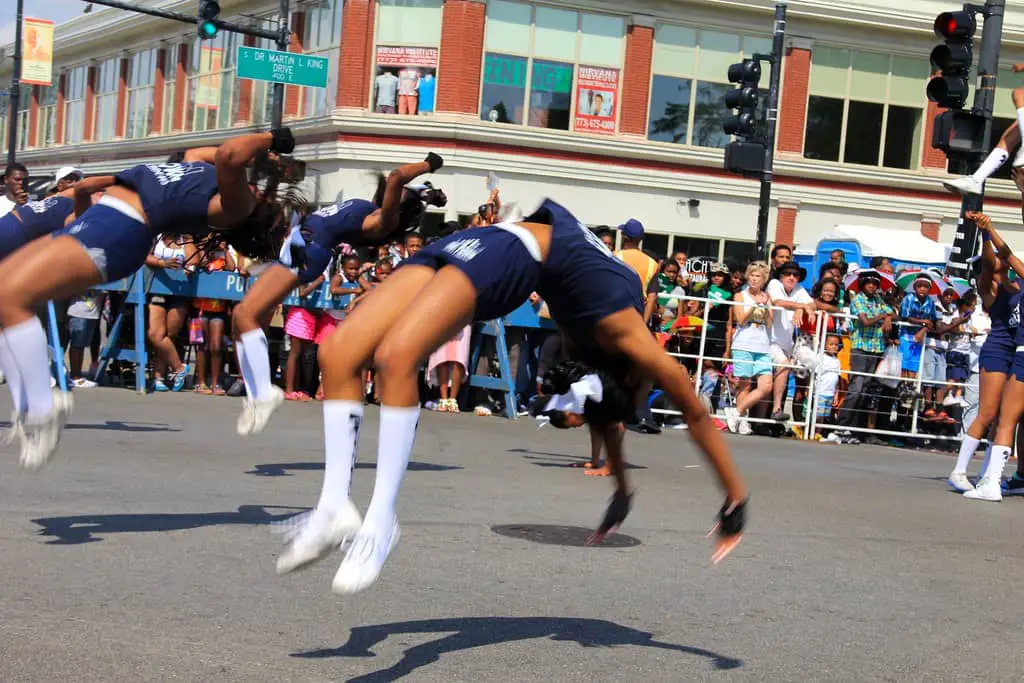
After-Parade Activities: A Day of Celebration
The Bud Billiken Parade and Picnic is more than just a parade; it is a day of celebration and entertainment for the community.
After the parade, attendees are invited to Washington Park for the after-parade activities, which offer a variety of family-friendly events and attractions.
At the after-parade activities, visitors can expect numerous vendor booths offering various products and services.
In addition, food stands provide tasty treats, while merchandise vendors offer commemorative items and souvenirs to remember the day.
The after-parade activities also feature a range of attractive entertainment options.
Live music performances and concerts are a staple of the event.
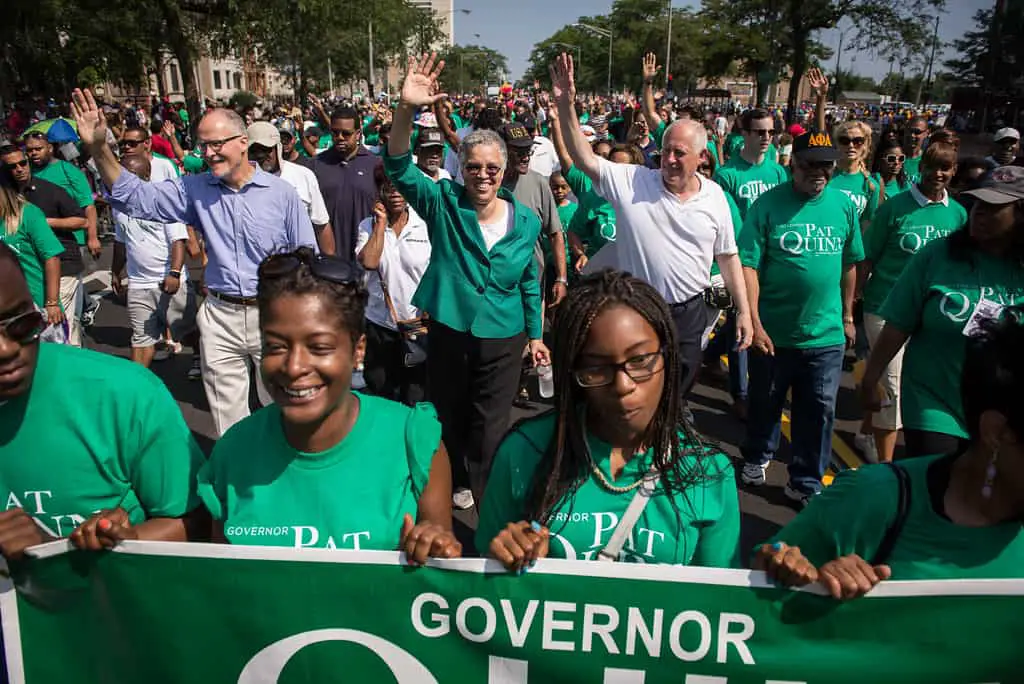
These concerts showcase popular musical acts and provide an exciting atmosphere for attendees.
While not every after-parade activity includes a concert, there is always a variety of live entertainment and performances that cater to all ages and interests.
In addition to concerts and performances, the after-parade activities often host various cultural exhibitions, educational workshops, and family-friendly games, making it a perfect way for the community to come together and continue celebrating after the parade.
Notable Moments and Restructuring
The parade has had its share of notable moments, such as the 2003 concert featuring B2K, which was disrupted by violence and resulted in over 40 attendees being hospitalized.
In 2007, then-U.S. Senator Barack Obama served as the Grand Marshal for the second year, with other high-profile attendees including Mayor Richard M. Daley and Rev.
Al Sharpton.
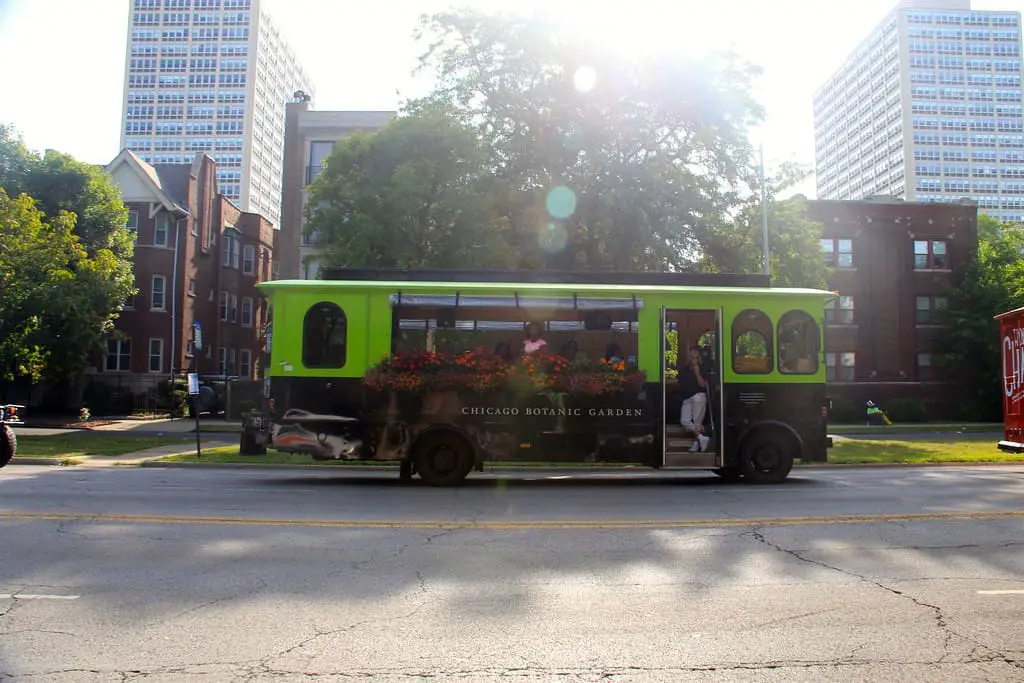
The 2008 parade was dedicated to actor and comedian Bernie Mac, a native of Chicago, who passed away an hour before the start of the parade.
In 1993, a request by a black LGBT group to participate in the parade was initially declined by the organizers.
However, following legal action and the involvement of Lambda Legal, the Ad Hoc Committee of Proud Black Lesbians and Gays was allowed to participate in the parade the following year.
The COVID-19 pandemic led to the first-ever cancellation of the parade in 2020.
As a result, a “scaled-down” event was held in 2021.
The Chicago Defender Charities, responsible for organizing the parade, underwent a significant restructuring in 2017.
Myiti Sengstacke-Rice, the great-grandniece of Robert Sengstacke Abbott and granddaughter of John Herman Henry Sengstacke, now serves as the Board President of the Chicago Defender Charities and Bud Billiken Parade Chair.

Bud Billiken Parade and Picnic: A Timeless Celebration of Unity
With its rich history and enduring appeal, the Bud Billiken Parade and Picnic remain a powerful symbol of unity, pride, and celebration for the African-American community in Chicago and beyond.
The television broadcasts and after-parade activities continue to enhance the event’s reach and impact, making it a cherished tradition for future generations.
